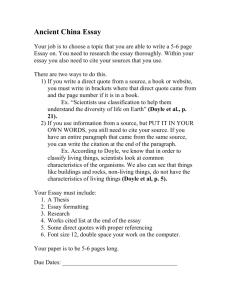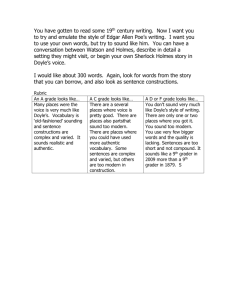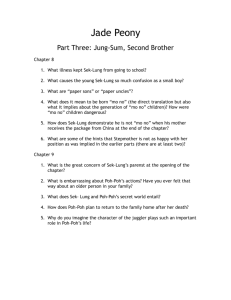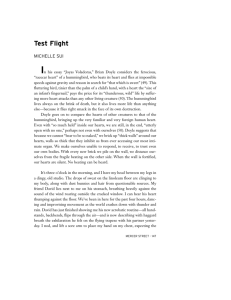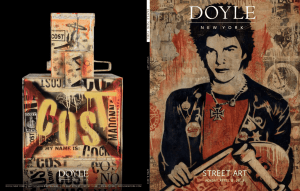Peter Moe Seminar in Composition Essay 1 The first thing to ask
advertisement
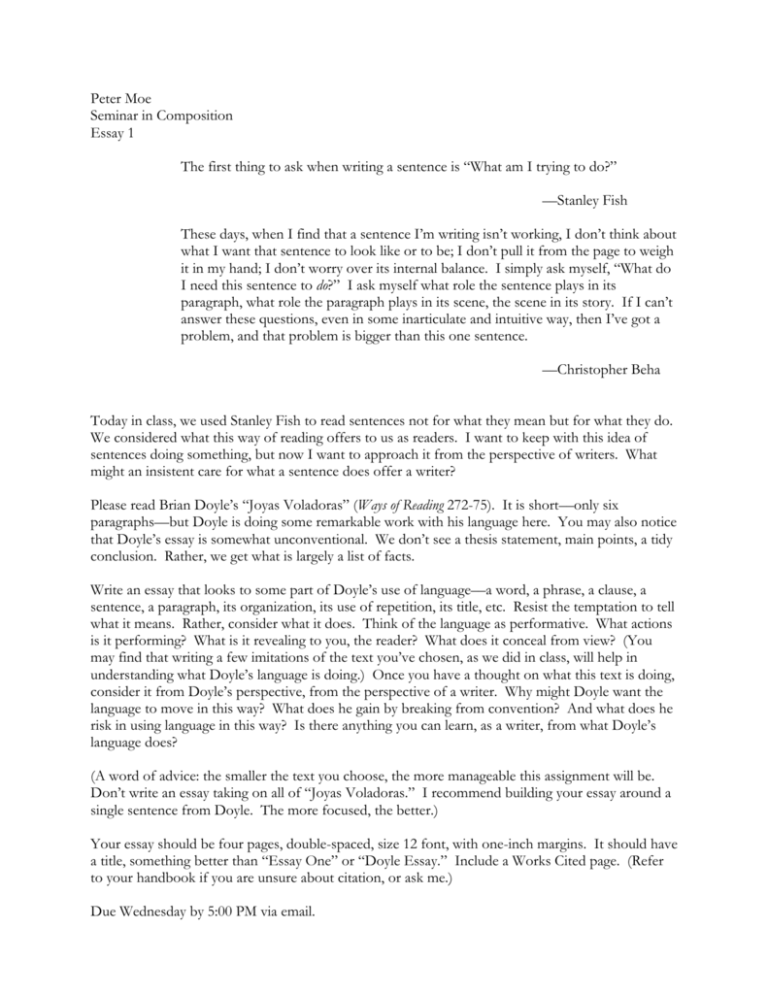
Peter Moe Seminar in Composition Essay 1 The first thing to ask when writing a sentence is “What am I trying to do?” ––Stanley Fish These days, when I find that a sentence I’m writing isn’t working, I don’t think about what I want that sentence to look like or to be; I don’t pull it from the page to weigh it in my hand; I don’t worry over its internal balance. I simply ask myself, “What do I need this sentence to do?” I ask myself what role the sentence plays in its paragraph, what role the paragraph plays in its scene, the scene in its story. If I can’t answer these questions, even in some inarticulate and intuitive way, then I’ve got a problem, and that problem is bigger than this one sentence. ––Christopher Beha Today in class, we used Stanley Fish to read sentences not for what they mean but for what they do. We considered what this way of reading offers to us as readers. I want to keep with this idea of sentences doing something, but now I want to approach it from the perspective of writers. What might an insistent care for what a sentence does offer a writer? Please read Brian Doyle’s “Joyas Voladoras” (Ways of Reading 272-75). It is short––only six paragraphs––but Doyle is doing some remarkable work with his language here. You may also notice that Doyle’s essay is somewhat unconventional. We don’t see a thesis statement, main points, a tidy conclusion. Rather, we get what is largely a list of facts. Write an essay that looks to some part of Doyle’s use of language––a word, a phrase, a clause, a sentence, a paragraph, its organization, its use of repetition, its title, etc. Resist the temptation to tell what it means. Rather, consider what it does. Think of the language as performative. What actions is it performing? What is it revealing to you, the reader? What does it conceal from view? (You may find that writing a few imitations of the text you’ve chosen, as we did in class, will help in understanding what Doyle’s language is doing.) Once you have a thought on what this text is doing, consider it from Doyle’s perspective, from the perspective of a writer. Why might Doyle want the language to move in this way? What does he gain by breaking from convention? And what does he risk in using language in this way? Is there anything you can learn, as a writer, from what Doyle’s language does? (A word of advice: the smaller the text you choose, the more manageable this assignment will be. Don’t write an essay taking on all of “Joyas Voladoras.” I recommend building your essay around a single sentence from Doyle. The more focused, the better.) Your essay should be four pages, double-spaced, size 12 font, with one-inch margins. It should have a title, something better than “Essay One” or “Doyle Essay.” Include a Works Cited page. (Refer to your handbook if you are unsure about citation, or ask me.) Due Wednesday by 5:00 PM via email.

